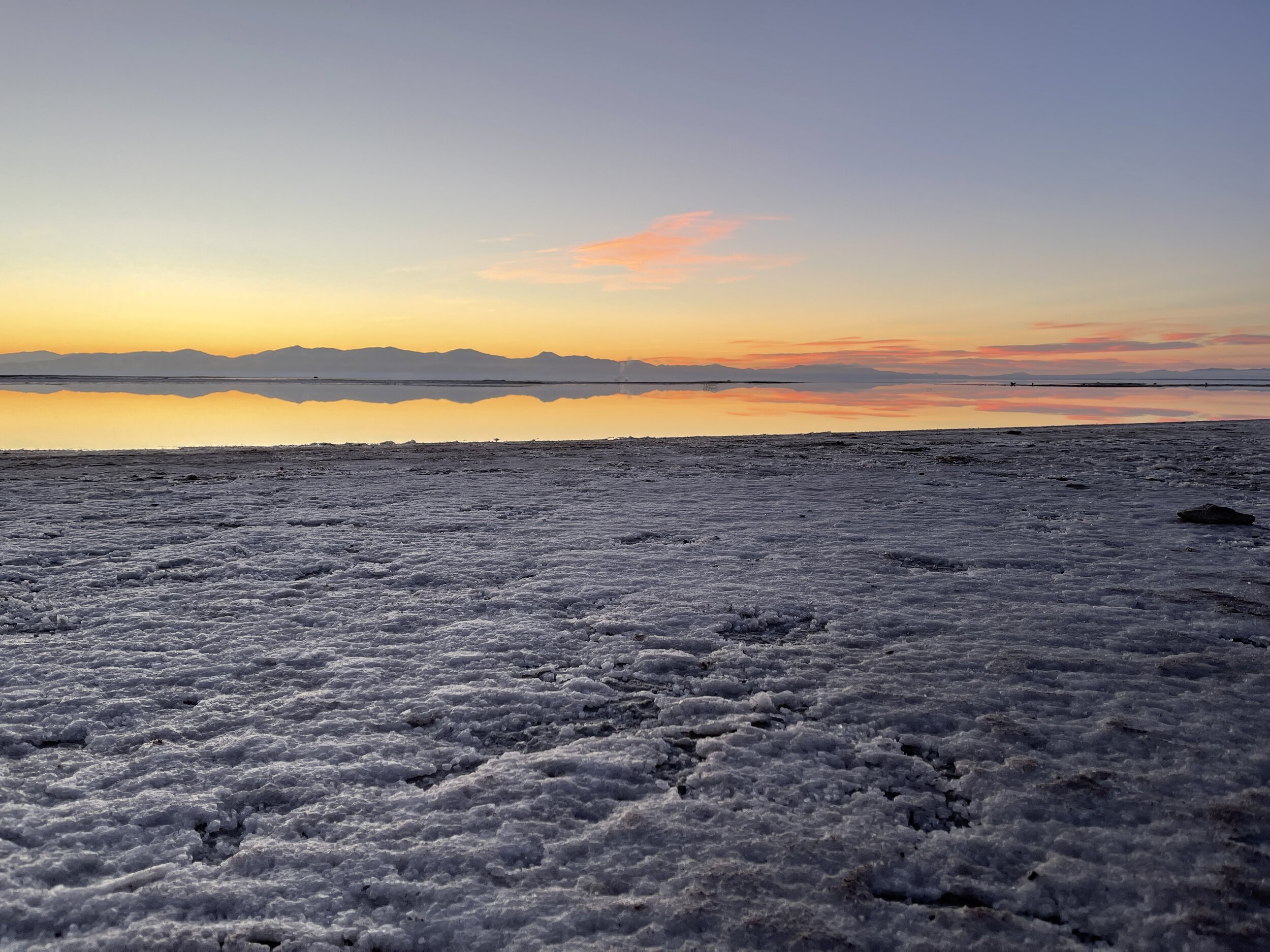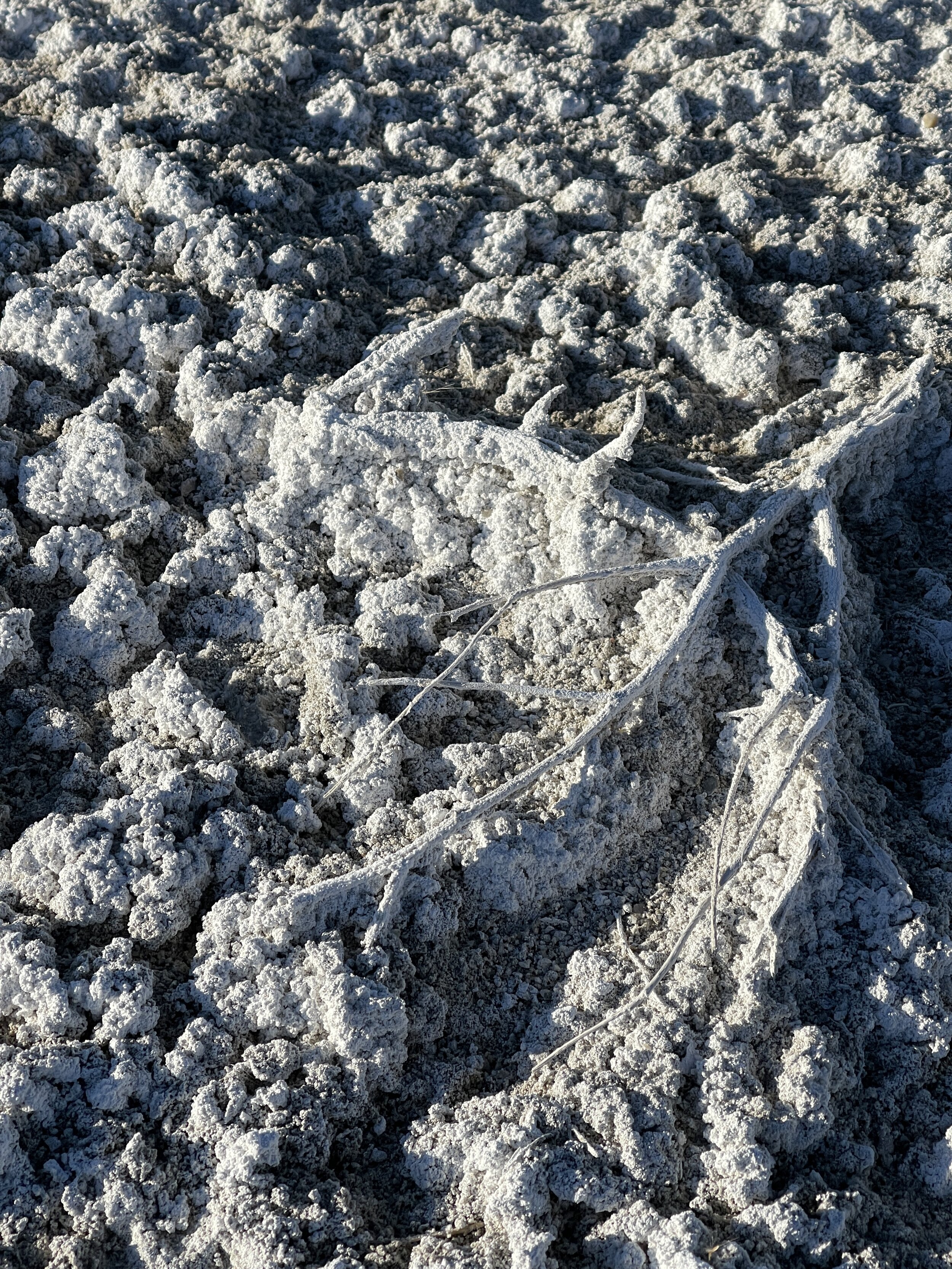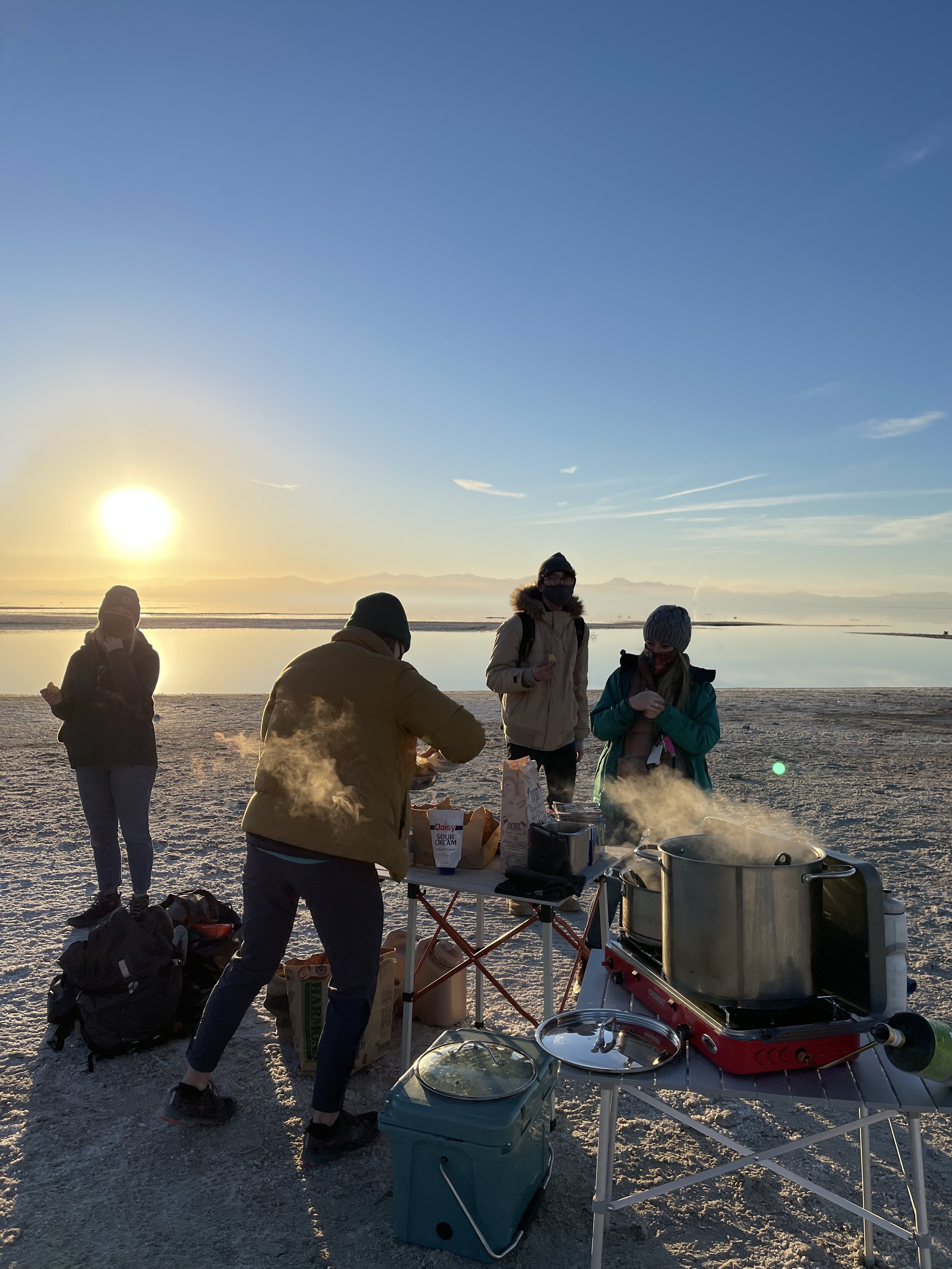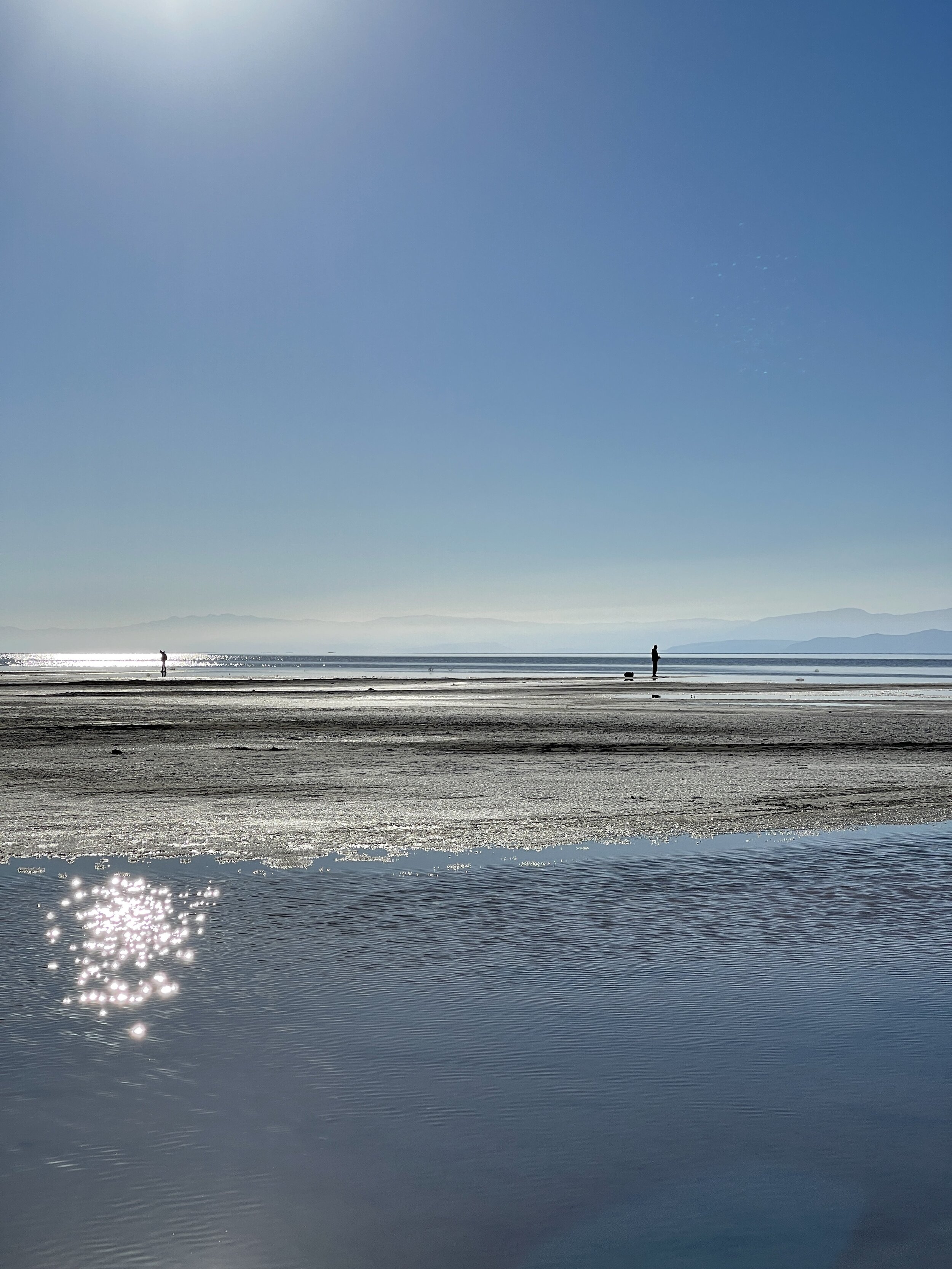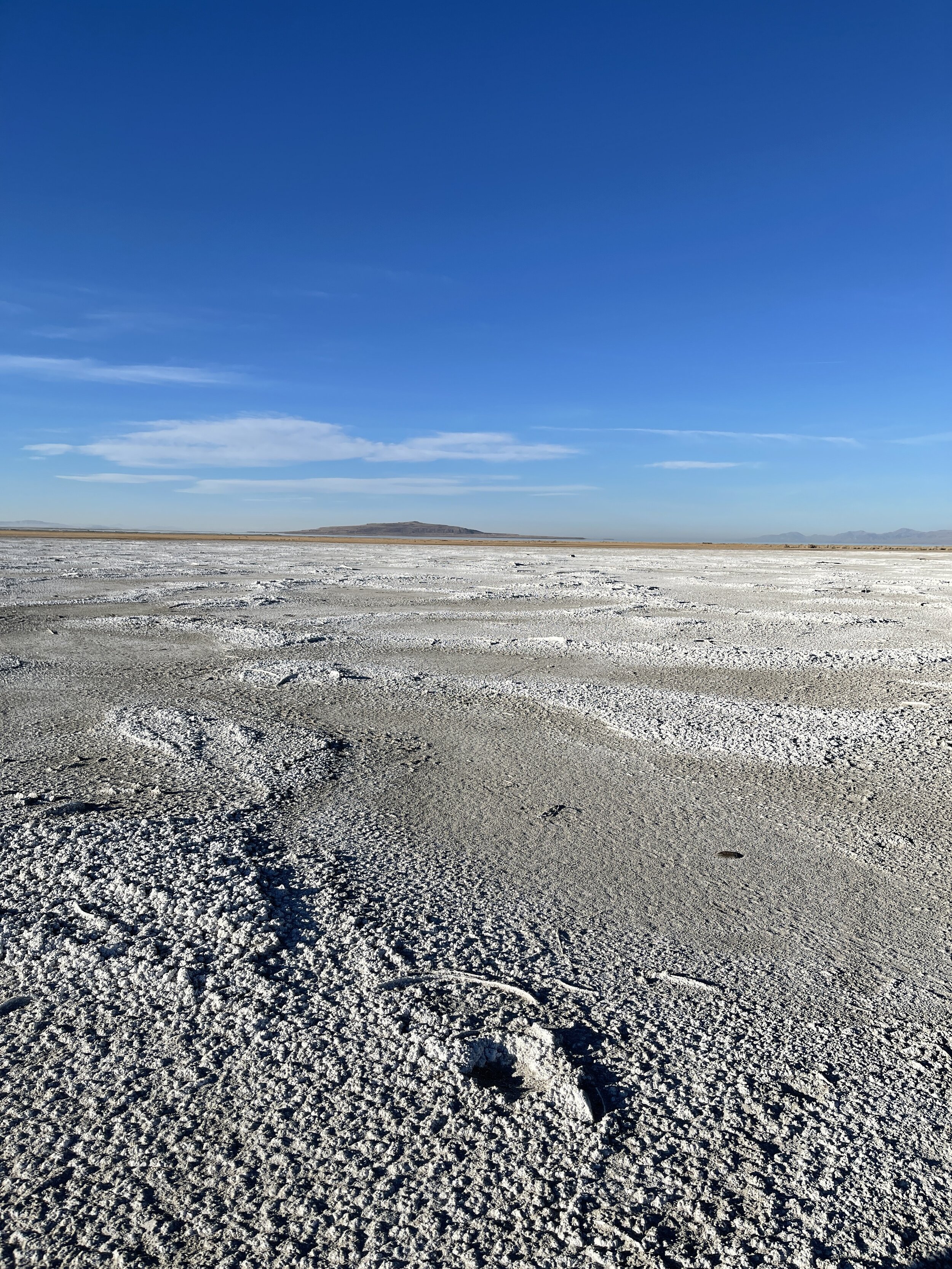The Spring’21 Field Studio spent the first day of class at Stansbury Island.
On January 20 we reconvened the studio. In a new season, a new year, a new administration, with new participants, in a new landscape that none in our studio had yet experienced. I hope the students have as much a feeling of hope and regeneration as I do, despite the many challenges we face as a society and a nation.
We met on Stansbury Island to begin the studio with the austere beauty of a salt desert framed by its memory of ancient waters. Water so massive it’s difficult to imagine. Geological time so endless it’s impossible to comprehend. The front end of the basin and range that stretches in equidistant gasps to the Sierra Nevada is but a threshold on the map, but a long walk by foot across the lake floor. Quiet enough to set intentions for the studio before us, immediate enough with the constant industrial hum at the water’s edge. This visceral age old place demands the attention of the body, easing us into a beginning exercise that trusts the gut, the heart, while we move without seeing, without thinking, into the primacy of making. The exercise is an attempt to manifest the body’s response through the instinct of the designer.
Stansbury Island is currently held in the description of maps and policies as public land, except where it’s private. Interstate-80 orphans the island, really a peninsula, from the Stansbury Mountain Range to the south. In 11 short miles the Bureau of Land Management invites the public to hike to the Castle Rock peak at 6,647 ft above sea level or walk along the shore. Without a permit one can search out petroglyphs, set up camp, practice target shooting, or bike up mountains. Lease agreements allow others to graze their cattle or sheep, mine mineral claims, quarry stone, and shrimp the waters. A farmer would hardly consider it fertile ground, but the sparse livestock and wildlife enjoy a surprising variety of halophytes that grow beneath the occasional juniper. Despite this complex choreography in a ‘land of many uses’, the popular wilderness aesthetic would dismiss the island as a ‘desolate and isolated waste-land’. I am dissatisfied by this pruning when I stand next to waters that alternate from pristine, sky glass, to sparkling crystal fields, awash in an infinite range of color that fades from blue to pink to orange even before the sun slips past the horizon.
The field studio has several simple objectives. Students are invited to consider their relationship to the natural world and to develop their own ecological consciousness. A central challenge is to confront how we, as designers, are complicit in averting social and environmental justice despite our best intentions. As we develop studio practice, iterative process, we develop a land ethic - a design ethic.
The field studio is facilitated through community engagement. We engage community partners who are concerned with the management of public lands, in this case the Bureau of Land Management later in the semester. We also extend our own personal community in our engagement with the landscapes and people as we strive to create relationship and reciprocity through design.
While we prepare our bodies, we preparing our thinking. To mediate the paradox of human use, and strange beauty, jarring smells and calming vistas we turn not only to process, but precedent. This exercise is complimented by readings in ecofeminism, decolonization, attitudes towards nature, and the history of our public lands in the U.S. Each student will establish their own footing for the later sorting of complex political and cultural fields of the Bears Ears region.
Our current Land Response Exercise is foundation for the second half of the studio designing products that facilitate experience in public lands. While our program is a digital, physical, platform product design curriculum, it acknowledges and accommodates a multiplicity of student design identities, interests, and practices. In the Field Studio, students are responsible for defining their process in many dimensions: do they elaborate on design research, or efficiently dispatch critical framing to focus on the design refinement and implementation? Are they interested in speculative and critical contributions to design discourse or commercial products in the market? Some students intensify their practice in one track - digital product, physical product, or platform product - others embrace a multi-disciplinary approach combining multiple product outcomes. Regardless of design process or final product outcomes, the students share the exploration of the so-called Bears Ears National Monument, with our partners at the Bureau of Land Management and the generous guidance and influence of many community organizations and independent scholars.
This semester Covid has de-railed our field work in the Bears Ears, but we are fortunate to be located in an urban setting so close to so many accessible landscapes. It is supposedly still winter despite a lack of snowy evidence up and down the Colorado Plateau. The juniper on Stansbury Island are few and far between, yet this month they are spangled by the same vermeil cones that drench their distant relatives in the pinyon-juniper woodlands of the Bears Ears. There are many stark contrasts between the southern desert and the Great Salt Lake, but as designers perhaps we are better served by what we find in common.
